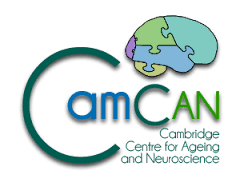
Camilla.Nord@mrc-cbu.cam.ac.uk
01223 767481
I lead the Mental Health Neuroscience programme of research at the MRC Cognition and Brain Sciences Unit, University of Cambridge. We work to answer questions like: what changes in our brain during periods of mental ill-health? How does the way our brains process the world, including the physical body, make us susceptible to developing a mental health disorder? And finally, how can we capitalise on the tools of neuroscience - brain imaging, brain stimulation, computational modelling, among others - to improve our ability to treat mental health disorders?
To answer these questions, I conduct three types of experiments in mental health neuroscience:
- Discovery neuroscience experiments investigating cognitive and physiological mechanisms important for maintaining mental health (e.g., this MR imaging study in adolescents, or this behavioural study). We have a particular interest in body-brain interactions, including metabolic and gastric mechanisms (like this study showing a role for the stomach's rhythm in disgust avoidance)
- Clinical experiments in patient populations, such as people suffering from major depressive disorder, to investigate brain and behavioural differences that occur as a result of a mental health condition (e.g., this fMRI study, or this behavioural study). We are keen to use transdiagnostic approaches to reveal brain differences in sensing the physical body across psychiatric disorders
- Translational studies testing out new ways of treating mental health disorders (such as this trial of a new treatment for depression or this experimental study of a new type of brain stimulation - I am especially interested in "acute augmentations" of psychological therapy); or using reverse translation to understand the mechanisms of existing treatments (such as this imaging study here, or computational psychiatry approaches to understand how psychological therapy works).
I also have an interest in methodological issues affecting neuroscience and psychiatry - see my work on statistical power and imaging reliability (here and here), and in science communication - see my book for a general audience, The Balanced Brain.
Do visit the Mental Health Neuroscience Lab website to find out more about our work in Cambridge: www.nordlab.co.uk
MEHRHOF, S.A. NORD, C. (In Press) Overlapping effects of neuropsychiatric symptoms and circadian rhythm on effort-based decision-making, eLife [Read More]
SMITH, A., Bisby, J.A., DERCON, Q., BEVAN, A., Kigar, S.L., Lynall, M-E., DALGLEISH, T., Hitchcock, C., NORD, C. (2024) Hot metacognition: poorer metacognitive efficiency following acute but not traumatic stress, Translational Psychiatry, 14, 133 [Open Access]

NORD, C. L., Longley, B., DERCON, Q., Phillips, V., Funk, J., GORMLEY, S., KNIGHT, R., SMITH, A.J. & DALGLEISH, T. (2023) A transdiagnostic meta-analysis of acute augmentations to psychological therapy, Nature Mental Health, 1, 389-401 [Open Access]

NORD, C. , MEHHROF, S., SANDHU, T., HITCHCOCK, C., LAWSON, R.P., Pizzagalli, D., DALGLEISH, T., DERCON, Q. (2023) A core component of psychological therapy causes adaptive changes in computational learning mechanisms, Psychological Medicine, 08 Jun 2023, :1-11 [Open Access]

NORD, C. L., Garfinkel, S.N. (2022) Interoceptive pathways to understand and treat mental health conditions, Trends in Cognitive Sciences, Trends in Cognitive Sciences, 26(6), June 2022, 499-513 [Open Access]

DALMEIJER, E.S., NORD, C. L., ASTLE, D.E. (2022) Statistical power for cluster analysis, BMC Bioinformatics, 31 May 2022, 23(1):205 [Open Access]

Weidacker, K., Seung-Goo, K, NORD, C. , Rua, C., Rogers, C.T., Voona, V. (2021) Avoiding monetary loss: a human habenula functional MRI ultra-high field study, Cortex, 142, 62-73 [Open Access]

NORD, C. L. (2021) Predicting response to brain stimulation in depression: a roadmap for biomarker discovery, Current Behavioral Neuroscience Reports, 8(1), 11-19 [Open Access]

NORD, C. L., LAWSON, R.P., DALGLEISH, T. (2021) Disrupted dorsal mid-insula activation during interoception across psychiatric disorders, The American Journal of Psychiatry [Open Access]

NORD, C. L., Feldman Barrett, L., Lindquist, K.A., Ma, Y., Marwood, L., Satpute, A.B., DALGLEISH, T. (2021) Neural effects of antidepressant medication and psychological treatments: a quantative synthesis across three meta-analyses, The British Journal of Psychiatry, 219(4), 546-550 [Open Access]

NORD, C. L., DALMAIJER, E., Armstrong, T., BAKER, K., DALGLEISH, T. (2020) A causal role for gastric rhythm in human disgust avoidance, Current Biology, 31(3), 629-634.e3 [Open Access]

LAWSON, R., Bisby, J., NORD, C. , Brugess, N., Rees, G. (2020) The computational, pharmacological, and physiological determinants of sensory learning under uncertainty, Current Biology, 31(1), 163-172.e4 [Open Access]

NORD, C. L., Halahakoon, D.C., Lally, N., Limbachya, T., Pilling ,S,. Roiser, J.P. (2020) The neural basis of hot and cold cognition in depressed patients, unaffected relatives, and low-risk healthy controls: an fMRI investigation, Journal of Affective Disorders, 274, 1 September 2020, 389-398 [Open Access]

Kohl, S., Hannah, R., Rocchi, L., NORD, C. L., Rothwell, J., Voon, V. (2019) Cortical Paired Associative Stimulation Influences Response Inhibition: Cortico-cortical and Cortico-subcortical Networks., Biological Psychiatry, 85, 355-363 [Read More]
NORD, C. L., Popa, T., Smith, E., Hannah, R., Donamayor, N., Weidacker, K., Bays, P.M., Rothwell, J., Voon, V (2019) The effect of frontoparietal paired associative stimulation on decision-making and working memory, Cortex, 117, 266-276 [Open Access]

NORD, C. L., Seung-Goo, K., Buhl Callesen, M., Kvamme, T.L., Jansen, M., Pedersen, M.U., Romer Thomsen, K., Voon, V. (2019) The myeloarchitecture of impulsivity: premature responding in youth is associated with decreased myelination of ventral putamen., Neuropsychopharmacology, 44(7), 1216–1223 [Open Access]

NORD, C. L., Gray, A., Robinson, O.J., Roiser, J.P. (2019) Reliability of Fronto-Amygdala Coupling during Emotional Face Processing., Brain Sciences, 9(4), 89 [Open Access]

NORD, C. L., Halahakoon, D.C, Limbachya, T., Charpentier, C., Lally, N., Walsh, V., Leibowitz, J., Pilling, S., Roiser, J.P. (2019) Neural predictors of treatment response to brain stimulation and psychological therapy in depression: a double-blind randomized controlled trial. , Neuropsychopharmacology, 44(9), 1613-1622 [Open Access]


 MRC Cognition and Brain Sciences Unit
MRC Cognition and Brain Sciences Unit

